Practical Strategies for a Plastic-Free Life
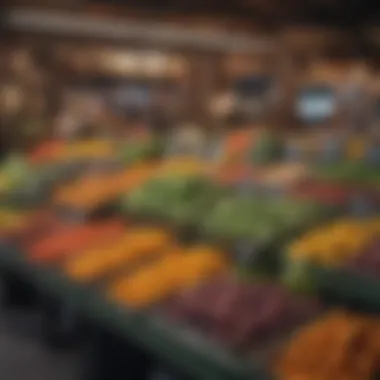
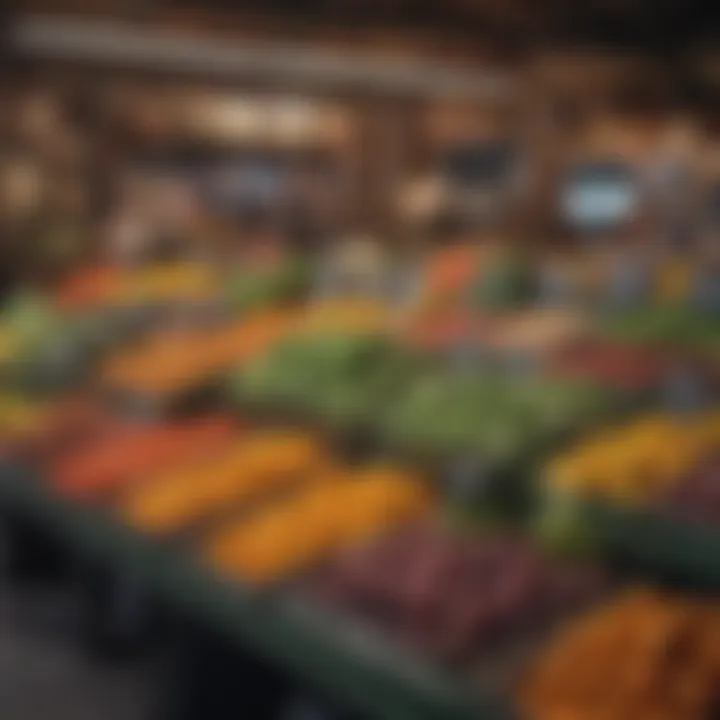
Nature Topic Overview
Plastic pollution is one of the most pressing environmental challenges of our time. It affects wildlife, ecosystems, and even our daily lives. Every year, millions of tons of plastic end up in oceans, rivers, and landfills. While plastic is handy for many purposes, it’s vital to think about the long-term consequences of our choices. By embracing a plastic-free lifestyle, we can make a positive impact on our environment, promote sustainability, and help protect natural habitats.
But what does living without plastic even look like? The journey towards reducing plastic usage is not just about giving up straws or plastic bags. It's about being mindful in our choices, discovering alternatives, and inviting our families and students to be part of the solution. Here are some fascinating aspects to consider as you embark on this significant lifestyle shift.
Fun Facts and Trivia
- Plastic in Numbers: Did you know that the world produces about 300 million tons of plastic each year? That's roughly the weight of the entire human population!
- Ocean Impact: It’s estimated that around 100 million marine animals die each year due to plastic pollution. Every single piece of plastic that goes into the ocean can harm marine ecosystems.
- Long Life: Plastic can take anywhere from 20 to 500 years to decompose, depending on the type. That's why reducing plastic usage now is crucial!
Engaging visuals, like infographics, can make these statistics come alive for children. You can also create simple quizzes to challenge your learners’ knowledge about marine life affected by plastics.
Wildlife Explorations
Many animals are impacted by plastic pollution. For instance, sea turtles often mistake plastic bags for jellyfish, which can lead to choking or digestive problems. Birds are another group that suffers; they may ingest small plastic pieces, mistaking them for food, which can be fatal.
- Sea Turtles: Found in all the world's oceans, these amazing creatures are known for their long migrations and are particularly vulnerable to plastic pollution.
- Albatrosses: Known for their impressive wingspan, many albatrosses feed on plastic debris, which they often confuse with food, resulting in harmful consequences.
Exploring the habitats of these creatures can be fascinating! You can encourage the children to learn facts about these species, followed by a fun puzzle challenge where they match animals to the types of plastics they might encounter in their environments.
Environmental Awareness
Conservation is something we can all be a part of. It starts with awareness. Understanding how plastic pollution affects nature fosters a deeper connection to our environment. There are various actions that children can take:
- Simplifying their lunch by using lunch boxes instead of plastic bags.
- Recycling or repurposing items at home to reduce waste.
- Organizing clean-up events in local parks or beaches.
"Every small step counts when it comes to protecting our planet. Even little hands can make a big difference!"
DIY Nature Activities
One way to encourage a plastic-free lifestyle is through hands-on activities that promote creativity and environmental responsibility:
- Nature Collage: Go outside to collect natural materials like leaves and flowers, then create a beautiful collage that speaks to the beauty of nature, avoiding plastic crafts.
- Upcycled Bird Feeders: Use old containers to design bird feeders, keeping plastic out of landfills while aiding local wildlife. Just fill them with seeds and hang them in your backyard.
- Gardening Projects: Start a mini garden. Children can plant seeds in biodegradable pots made from materials like cardboard.
These activities not only enhance an understanding of nature but also allow children to participate in environmentally friendly practices while having a blast! Encouraging outdoor exploration helps reinforce their learning and establishes a connection to the world around them.
As you embark on this path towards a plastic-free lifestyle, remember that you are not just making changes for yourself, but inspiring others too. Whether it’s through your daily actions or activities with kids, every effort counts towards a bigger change.
Prelims to Plastic Pollution
Plastic pollution has become a pressing concern in today’s world. It’s not just a buzzword or a trend; it’s a reality that affects ecosystems, wildlife, and human health. Understanding the full scope of plastic pollution is the first step toward fostering a more sustainable environment. In this section, we aim to illuminate the topic, highlighting crucial aspects like what plastics are made of, their environmental impacts, and the urgent need for societal change.
Understanding Plastic Materials
To truly grasp plastic pollution, one must first understand plastic itself. Plastics come from natural resources, primarily fossil fuels. They are manufactured into different forms for various applications. Here are some common types of plastics:
- Polyethylene Terephthalate (PET) - Often found in water bottles and food containers.
- High-Density Polyethylene (HDPE) - Used in milk jugs and detergent bottles.
- Polyvinyl Chloride (PVC) - Commonly used in pipes and vinyl flooring.
- Low-Density Polyethylene (LDPE) - Found in grocery bags and some food wraps.
- Polypropylene (PP) - Used in yogurt containers and straws.
However, these materials don’t decompose easily. They can linger in our environment for hundreds of years, breaking down into smaller particles but never truly disappearing. This is where the trouble begins, as tiny plastic particles often make their way into soil, water, and even the food chain.
Environmental Impact of Plastics
The environmental consequences of plastic use are profound. Plastics can severely harm wildlife, both on land and in oceans. Animals can ingest plastic, thinking it’s food, or become entangled in it. A well-known example is the sea turtle that mistaked a plastic straw for a jellyfish. Such incidents are not rare and highlight the immediate dangers posed by our plastic habits.
Additionally, plastic pollution contributes to broader ecological damage. Here’s how:
- Ocean Pollution: Millions of tons of plastic enter the oceans each year, creating large patches of waste, like the Great Pacific Garbage Patch.
- Habitat Destruction: Plastics litter natural habitats, affecting biodiversity.
- Chemical Leaching: Plastics can leach harmful chemicals into the environment, posing risks to both wildlife and humans.
The Urgency for Change
Recognizing the gravity of the plastic pollution crisis necessitates an urgent call for change. Time is not on our side, and this isn’t just about cleaning up existing waste. It’s about rethinking our entire relationship with plastics.
"If we don't change our behaviors now, we may face a world where plastic outnumbers fish in the ocean by 2050."
To truly combat plastic pollution, collective action is essential. Communities, families, and individuals must commit to reducing plastic usage. Some effective strategies may include:
- Reducing consumption: Opting for products with minimal packaging.
- Recycling properly: Understanding what can and cannot be recycled in your community.
- Educating others: Raising awareness about the impacts of plastics, especially among children who will be inheriting our planet.
In summary, to navigate a plastic-free lifestyle effectively, we must dig into the heart of plastic pollution. It’s not merely about eliminating plastic, but also about redefining our choices and fostering new habits geared toward a sustainable future.


Mindful Consumption Practices
In a world increasingly suffocated by plastic waste, mindful consumption practices become a vital approach. It’s about being aware of our choices and the impact they have on the environment. Families, educators, and caregivers can guide young minds into understanding that even small decisions in daily life can lead to significant changes. When kids learn to think critically about what they buy and use, they not only hone their decision-making skills but also become stewards of the planet.
Evaluating Product Packaging
When it comes to shopping, one of the first things we notice is the packaging. However, for a plastic-free lifestyle, it’s essential to dig deeper. Packaging can often be misleading. A shiny, colorful box might catch our eye, but what materials are used? Here are a few pointers to consider:
- Check Material: Opt for products in cardboard or glass instead of plastic.
- Look for Certifications: Some brands use biodegradable materials or are certified as environmentally friendly.
- Avoid Single-Use: Each time we pick a single-use item, we contribute to the growing mountain of plastic waste.
"Every plastic item not bought today is one less that could end up in the ocean tomorrow."
Kids can join in on this by checking labels, turning shopping into a fun scavenger hunt for alternatives. Not only does this engage them, but it also instills a sense of responsibility.
Choosing Bulk and Loose Items
Shopping in bulk or buying loose items can significantly cut down plastic usage. How so? Many grocery stores now offer options that eliminate packaging entirely. Imagine wandering through the local market and seeing fruits and vegetables available without any plastic wrapping. Here’s how to navigate this:
- Bring Your Own Containers: A little forethought goes a long way. Have your jars, cloth bags, or reusable produce bags handy.
- Focus on Fresh: Fresh items like grains, nuts, and snacks can often be found in bulk bins. Just scoop, weigh, and pay.
- Support Local Farmers: Farmer's markets typically use less plastic and provide an opportunity to support local businesses.
It's a win-win for the planet and the pocket! Kids can learn the importance of supporting local initiatives while enjoying fresh produce.
Prioritizing Reusable Alternatives
Transitioning to reusable items from disposables significantly reduces plastic waste. Most families have a treasure trove of items they can switch out. Here are a few suggestions:
- Water Bottles: Ditch the plastic bottles. A sturdy stainless steel or glass option keeps drinks cold and is often more economical.
- Cloth Napkins: Instead of paper napkins, cloth ones can be washed and reused, adding a touch of elegance to every meal.
- Bamboo Cutlery: Invest in bamboo utensils for eating on the go, eliminating the need for their plastic counterparts.
Educating children about these alternatives not only teaches them to be resourceful but also encourages them to think creatively about sustainability. When they’re involved in the process, they naturally take pride in maintaining a plastic-free lifestyle.
By embedding mindful consumption practices into everyday routines, families can set a strong example for future generations. Small changes today can pave the way for a cleaner, more sustainable tomorrow.
Sustainable Home Practices
Sustainable home practices are not just a collection of good habits; they represent a shift in mindset toward a more nurturing relationship with our environment. When families take steps to create a sustainable home, they are not merely reducing plastic use; they are fostering a sense of responsibility towards the planet. Involving children in these practices can infuse lessons about sustainability into playful learning. By making small adjustments in our daily routines, we can inspire the next generation to care for the world they will inherit.
Adopting a Zero-Waste Mindset
The zero-waste mindset encourages individuals and families to think critically about waste and consumption habits. Instead of discarding items, think of ways to reuse, repurpose, or recycle. For instance, glass jars that once held pasta sauce can easily be transformed into storage containers for snacks or art supplies. This approach not only reduces waste but also fosters creativity.
Consider involving kids in this thought process. Asking questions such as "Can we use this for something else?" turns waste management into a fun challenge. With the right encouragement, children can become little innovators, developing solutions for every leftover item around the house.
DIY Cleaning Products
Creating your own cleaning products can be a game changer when aiming for a plastic-free lifestyle. Many commercial cleaners come packaged with plastic, contributing to pollution. However, homemade cleaners can be eco-friendly, cost-effective, and surprisingly effective.
Common Ingredients for DIY Cleaners:
- Vinegar: Cuts through grease and acts as a natural disinfectant.
- Baking Soda: Excellent for scrubbing and deodorizing.
- Essential Oils: Add a fresh scent and possess natural antibacterial properties.
Easy recipes include mixing equal parts vinegar and water for an all-purpose cleaner, or creating a paste from baking soda and water for stubborn stains. Involving children in the process of creating these products can teach them about chemicals and environmental impact, while having fun mixing their own concoctions in the kitchen.
Plastic-Free Kitchen Solutions
A kitchen can be our biggest source for plastic usage. With some creative thinking, it’s possible to devise plastic-free solutions that align with a sustainable lifestyle. The goal is to minimize single-use plastics and invest in durable alternatives.
Smart Swaps:
- Beeswax Wraps: Use these instead of plastic wrap to cover leftovers or pack lunches.
- Glass Containers: Opt for glass or stainless steel instead of plastic for food storage.
- Cloth Produce Bags: Use these when shopping for fruits and vegetables instead of the plastic bags provided at grocery stores.
Involving children in meal prep can also be beneficial. By teaching them to chop fruits and vegetables while using reusable containers, they can learn about nutrition and sustainability concurrently.
By integrating sustainable practices into our home routines, we are not just safeguarding the environment, we are cultivating a lifestyle that prioritizes health, well-being, and responsibility.
Transportation Choices
Transportation choices play a vital role in moving toward a plastic-free lifestyle. The way we travel significantly impacts both our environment and our reliance on plastic products. Selecting methods of transport that are eco-friendlier contributes not only to reducing carbon emissions but also to minimizing plastic consumption in everyday travel.
By prioritizing sustainable transport options, individuals can make conscious decisions that echo a larger commitment to environmental stewardship. In the following sections, we'll explore practical and creative alternatives to conventional vehicles, highlighting their benefits and considerations.
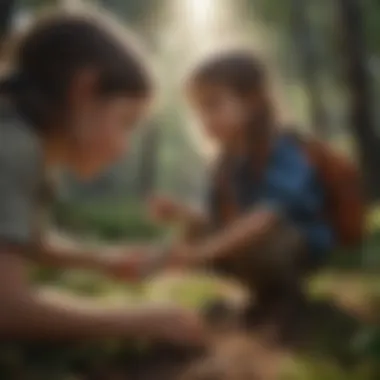

Walking and Biking
Walking and biking are among the simplest yet most effective ways to cut back on plastic use while enhancing personal health. A daily walk can significantly reduce the need for cars, thereby lessening plastic waste created from fuel containers and other vehicle-related materials. Biking, on the other hand, substitutes a car with a much more sustainable option.
Both modes of transport encourage an active lifestyle and allow individuals to enjoy their surroundings fully. Children, too, can be involved, making these activities both fun and educational.
"Walking or biking gets you moving and helps to keep the planet cleaner!"
Here are some notable benefits of walking and biking:
- Health Benefits: Improves cardiovascular health and reduces stress.
- Environmental Impact: Fewer emissions and less noise pollution.
- Cost-Effective: Eliminates fuel costs while requiring minimal maintenance for bikes.
Encouraging children to walk or bike with family or friends presents excellent opportunities for bonding and teaching them about the importance of a plastic-free lifestyle.
Utilizing Public Transport
Public transportation is another excellent way to reduce reliance on plastic. Buses, trains, and subways are designed to carry numerous individuals at once, leading to fewer vehicles on the road and less waste generated. When families utilize public transport, it’s not only a practical solution but also a chance to engage with community members and share experiences.
Many public transit systems are moving towards greener practices as well, which supports environmentally-responsible travel. This is especially important in urban areas where vehicle traffic contributes significantly to pollution.
Some advantages of public transport include:
- Reducing Carbon Footprint: Fewer vehicles mean a cleaner environment.
- Social Awareness: Provides an environment for discussions about sustainability and shared lifestyles.
- Accessibilty: Many public transport options are available, providing choices from buses to rails.
Carpooling and Ridesharing
Carpooling and ridesharing are clever ways to engage in more eco-friendly travel while connecting with others. By pooling rides, families not only share fuel costs but also lessen the amount of plastic waste associated with transportation. This could be done for school runs, day trips, or even everyday work commutes.
When planning to carpool, it’s essential to consider the following:
- Trust and Communication: Ensure everyone is comfortable and communicative.
- Designated Pick-up Points: This minimizes confusion and maximizes time efficiency.
- Routing: Planning your route can help reduce overall travel time.
Ridesharing services can also offer quick and convenient options when public transport isn't feasible. Here the flexibility is a plus, allowing you to travel without the hassle of owning or maintaining a vehicle.
As we navigate the journey toward a plastic-free life, we can see that even simple tasks like choosing how we travel align closely with our goals, making transportation an integral part of our sustainability efforts.
Engaging Children in Eco-Friendly Practices
Involving children in eco-friendly practices is crucial, as they are not just our future but also our present. Teaching them about sustainability and the impacts of plastic pollution equips them with knowledge that influences their choices for life. When children engage in these practices during their formative years, they establish habits and values that shape their perspectives toward environmental stewardship. It's essential to create a sense of responsibility and connection to nature, making them active participants in the planet's well-being.
Educational Activities About Plastic Impact
One of the most effective ways to raise awareness about plastic's adverse effects is through hands-on educational activities. These could range from conducting simple science experiments to organized outings like nature walks. For instance, you can prompt kids to collect different types of plastics or even litter during a park visit and discuss their thoughts afterward. They can also create art installations from collected waste, showcasing the sheer volume of plastic around them.
- Simple classroom projects: Set up a plastic pollution wall where kids can pin images of wildlife affected by plastic, helping them visualize the issue.
- Interactive discussions: Host class debates on alternatives to plastic, encouraging critical thinking about consumer choices.
"Engaging children in discussions about nature promotes curiosity and fosters a sense of urgency in protecting our planet."
Involving Kids in Sustainable Projects
Incorporating kids into sustainable projects makes environment-friendly practices tangible. Whether it’s a community garden or a recycling initiative, children's participation often evolves into invaluable lessons.
- Community Gardening: Assign them roles in planting and maintaining the garden. This not only connects them to the earth but also teaches them about food sustainability.
- Local Clean-Up Projects: Participating in organized clean-ups encourages teamwork while instilling a sense of pride in caring for their surroundings.
Encouraging them to share their experiences with family or friends ensures the discussion extends beyond the classroom or project site. When they discuss the importance of recycling or reducing waste at home, it empowers their knowledge.
Creating Plastic-Free Awareness Campaigns
Creating campaigns centered around reducing plastic usage amplifies children's voice in their communities. These initiatives can be fun and eye-opening. For instance, children could design flyers that promote the practice of using reusable bags or bottles. Schools can host "Plastic-Free Days," where kids are challenged to refrain from using any plastic.
- Art and Design: Encourage children to illustrate and brainstorm catchy phrases for their campaigns. They can even create digital content for social media platforms to appeal to a broader audience.
- School Assemblies: Host discussions or presentations led by children to spread awareness about the deleterious effects of plastic on marine life and local ecosystems.
By engaging in these campaigns, children not only learn about the importance of reducing plastic but also practice leadership, creativity, and advocacy. This involvement could spark lifelong passions for environmental issues.
Encouraging children to foster these positive practices is more than just educating; it’s about shaping thinkers and leaders of the future.
Community Involvement and Advocacy
Community involvement and advocacy play a crucial role in reducing plastic usage and fostering a plastic-free lifestyle. When a group of individuals rallies together, their collective voices can create a significant impact. Not only does it empower communities, but it also raises awareness about the pressing issues associated with plastic pollution. Participating in community initiatives fosters a sense of belonging, encourages shared responsibility, and builds a platform for creative solutions that can resonate with the wider population.
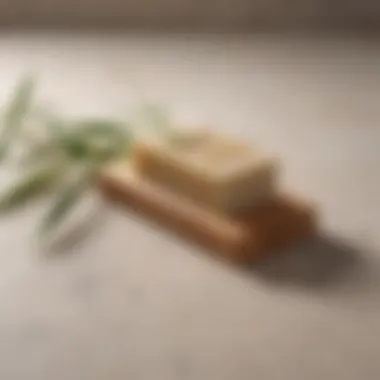
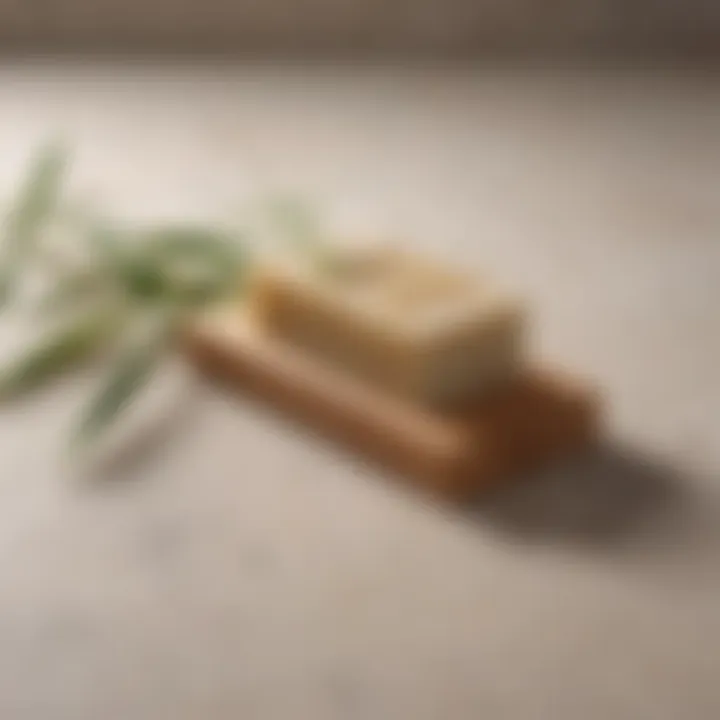
Grassroots efforts can lead to tangible changes in local policies, encouraging the adoption of environmentally friendly practices at the community level. Additionally, this involvement instills values in young children, teaching them the significance of caring for their surroundings.
Joining Local Environmental Groups
Becoming a member of local environmental groups offers a multitude of advantages for families. These groups often provide educational resources and organize engaging events that make learning about environmental protection fun and interactive.
- Network Building: Joining such groups connects individuals with like-minded people who share common goals. This network can lead to collaboration on projects that reduce plastic use and improve community sustainability.
- Resource Sharing: Members can exchange information about eco-friendly products, tips on reducing plastic, and strategies for advocacy. This sharing creates a valuable repository of knowledge.
- Empowerment: Being part of a group allows families to feel empowered in their efforts. Together, they can undertake initiatives that might seem too daunting when tackled individually.
Participating in Clean-Up Events
Clean-up events are a tangible way to engage directly with your community in the fight against plastic pollution. Such events not only result in a cleaner environment but also serve multiple educational purposes:
- Hands-On Learning: Children can see firsthand the impact of plastic waste in their local areas. This experience can be more impactful than just classroom lessons.
- Community Pride: Coming together to clean up local parks or beaches fosters a sense of pride and ownership in one's community, nurturing responsible citizens.
- Visible Impact: After an event, the visible difference made can be motivating. It highlights that collective effort leads to real change, establishing a precedent for future actions.
"Individually, we are one drop. Together, we are an ocean." - Ryunosuke Satoro
Advocating for Policy Changes
Advocacy isn't just about action; it also involves influence and change at a higher level. Fostering a culture of advocacy within families and communities is vital in advocating for policies that promote sustainability.
- Educate Your Community: Workshops and seminars can help inform others about the effects of plastic pollution and the necessity of supporting legislation aimed at reducing plastic waste.
- Engage with Local Officials: Writing letters, setting up meetings, and participating in town hall events can influence local governance to prioritize sustainable practices.
- Support Existing Policies: Families can rally around and support existing environmental policies. By understanding and advocating for these regulations, citizens can reinforce their importance and voice their concerns about any proposed rollbacks.
Promoting advocacy fosters critical thinking in children, enabling them to understand and engage with the political side of environmental issues. Through these experiences, they can learn the importance of standing up for what is right and become informed stewards of our planet.
Innovative Alternatives to Plastic
As we stand at the crossroads of environmental wellbeing and our ongoing dependence on plastic, the significance of exploring innovative alternatives to plastic cannot be overstated. With plastic pollution on the rise, seeking out sustainable options isn't just a trend; it's a necessity. In this section, we will dissect some of the cutting-edge materials and products that replace harmful plastics. The aim is to not just inform but inspire families, educators, and young learners about making thoughtful decisions that benefit both people and the planet.
Emerging Sustainable Materials
Recent innovations have introduced us to an array of sustainable materials that challenge the status quo of plastic dependence. Materials like mycelium, derived from fungi, offer a fascinating alternative to synthetic packing materials. Used in packaging, it decomposes easily, returning nutrients back to the soil.
Another noteworthy option is hemp-based materials. Hemp grows rapidly, uses fewer resources, and can yield a range of products, from biodegradable plastics to textile fibers. Here’s what to consider:
- Durability: Many sustainable materials are designed to withstand daily use while remaining eco-friendly.
- Energy consumption: Unlike conventional plastics, these materials often require less energy in production.
- End-of-life options: Many can decompose or recycle easily, reducing landfill clutter.
Exploring Plant-Based Products
Plant-based products are reshaping how we think about everyday items. Think of alternatives such as bioplastics made from corn starch or sugarcane. These can serve the same purposes as traditional plastics but without the lingering environmental costs.
Consider these plant-based options:
- Compostable bags: Perfect for trash, these break down over time, reducing waste.
- Bamboo toothbrushes: A great alternative to plastic brushes, compostable and stylish.
- Plant-derived utensils: Lightweight, sturdy, and completely compostable after use.
Using these products introduces children to the concept of a circular economy. They learn that materials can be reused rather than discarded.
Benefits of Biodegradable Options
Biodegradable products, often made from natural materials, present significant benefits in reducing plastic waste. Here’s why their use is on the rise:
- Environmental impact: These materials break down into natural substances, minimizing pollution.
- Health considerations: Many biodegradable products are free of harmful chemicals found in traditional plastics, promoting family health.
- Educational opportunities: Introducing these products to young learners provides tangible lessons in science, ecology, and responsible consumption.
"Switching to biodegradable options is not just a path toward sustainability but a step toward nurturing our planet.
Through understanding and utilizing innovative alternatives to plastic, families can lead in everyday practices that support a healthier environment. It’s a journey towards responsibility where each small choice adds up to a monumental change for our planet.
Closure: The Path Forward
As we draw the curtain on this exploration of a plastic-free lifestyle, it’s crucial to take a moment to reflect on our journey and the path that lies ahead. The direct impact of plastic on our planet urges us not just to act but to persist in our endeavor. Embracing change, even at a slow pace, is key in ensuring a sustainable environment for future generations.
Embracing Gradual Change
Transitioning away from plastic doesn’t have to feel like climbing a mountain. In fact, tackling this issue can be approached in manageable steps. Individuals often find it easier to integrate small changes into their daily routines instead of attempting a complete overhaul overnight. Start with one aspect, like switching to a metal water bottle. Once this becomes a habit, take on another change, such as bringing reusable bags for shopping.
Here’s how to make gradual changes effective:
- Set Realistic Goals: Begin with one or two small objectives to focus on. For example, reducing the number of disposable straws you use each week.
- Celebrate Wins: Each time you successfully swap any item for a more sustainable choice, acknowledge it. This reinforces the positive behavior.
- Involve Family: Encourage everyone at home to participate, making it a collective effort. Kids can express their opinions and suggest alternatives, fostering a deeper understanding of the importance of sustainability.
Remember, every effort counts and contributes to a larger, collective change.
Inspiring Future Generations
One of the most significant aspects of pursuing a plastic-free lifestyle is the opportunity to instill environmental values in children. Kids aged 5 to 12 are the stewards of our future, and educating them about the impact of their choices is essential. Practical, engaging educational activities can help cement their understanding of sustainability.
You can introduce topics about plastic pollution through:
- Interactive Discussions: Use simple language to explain concepts like recycling and waste reduction. Show them real-life examples of plastic pollution.
- Hands-On Projects: Get kids involved in simple DIY projects, such as creating crafts from recyclable materials. This not only teaches them about waste but also unleashes their creativity.
- Community Engagement: Involve them in local clean-up events. Participating in such activities will help them appreciate their environment and understand their role in protecting it.
"The only way forward is together. The choices we make today shape the world our children will inherit."
Ultimately, nurturing an educational relationship with nature will empower these young minds. It’s about more than simply avoiding plastics; it’s building an awareness that every choice matters, and that being environmentally responsible is part of who they are.







